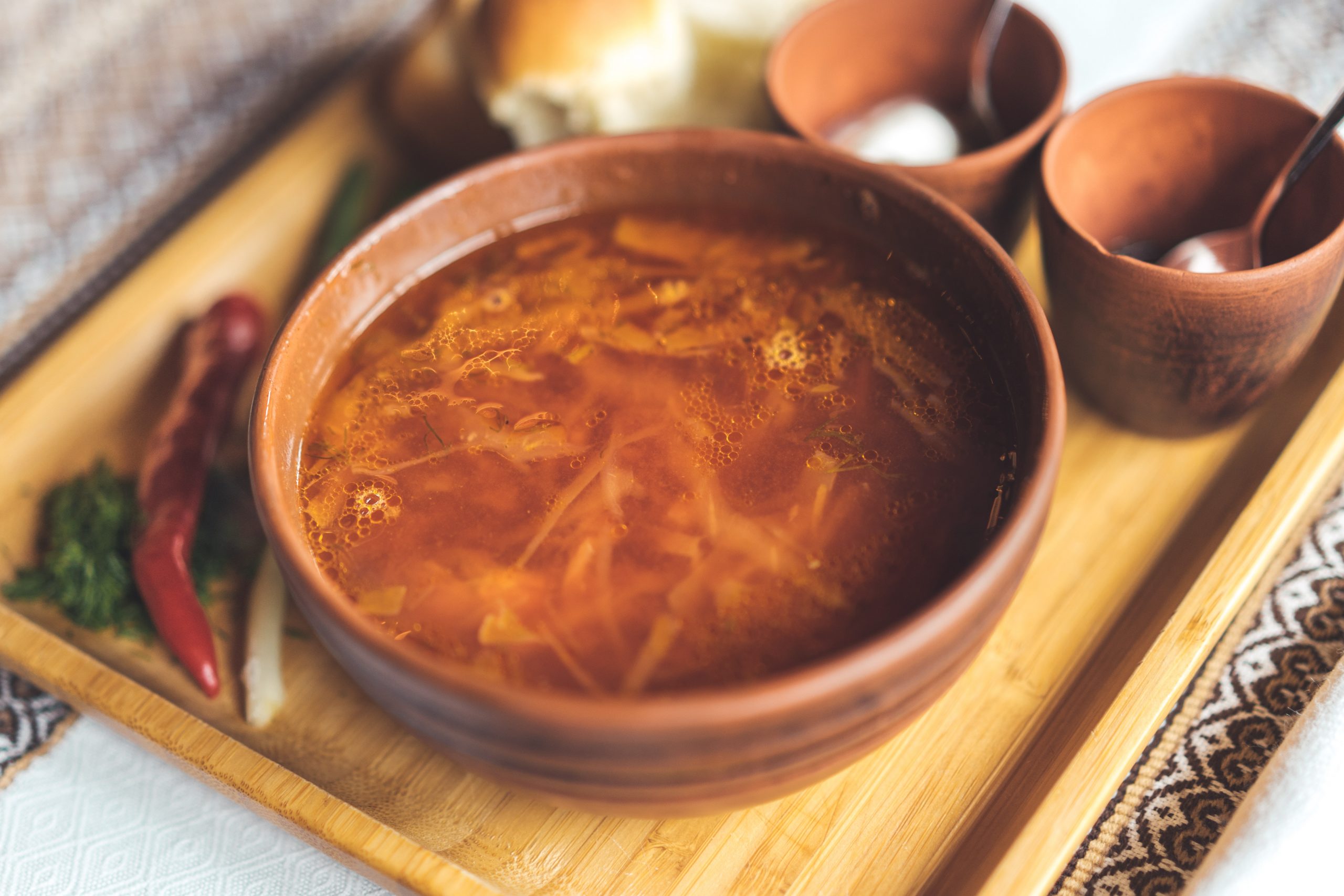Keeping a freezer full of bone broth is a great way to ensure you have the protein and nutrients you need to make your favorite recipes. However, freezing your broth is more challenging than it sounds. To freeze your bone broth properly, you need to understand how to prepare your broth and how to freeze your broth. So let’s start! This article will teach you how to freeze bone broth in ice cube trays, plastic bags, glass jars, and mason jars, tell when bone broth has gone bad, and how much you can drink in a day.

Can you Freeze Bone Broth?
Of course, You may store bone broth in the freezer for about six months. Bone broth can be frozen in large quantities in freezer bags or smaller, more concentrated amounts as ice cubes. Due to its health benefits, broth from heating leftover bones has returned to vogue. Bone broth contains a lot of vitamins and minerals. The fact that bone broth is so delicious is a bonus.
The Best Ways to Freeze Bone Broth
You can choose the best way to freeze bone broth based on your demands. By always having a supply of bone broth on hand, you can save time and money and increase the nutritional value of your recipes. Here are some options for freezing bone broth, along with the advantages and drawbacks of each, to help you decide which option is best for you. The following are the four most practical ways to freeze bone broth:
Method 1: Using Plastic Bags
This technique is ideal if you enjoy having quantities of stock on hand to use as a base for soups, stews, casseroles, or any other recipe you want!
- Cool: Remove the bones from the bone broth when it has finished cooking and allow it to cool fully.
- Bag Labels: Grab several freezer-safe containers or freezer bags of high quality. The date and contents should be written on the bags or containers. Before the broth freezes, ensure they don’t leak in the freezer.
- Serving Up: Portions of the bone broth should be spooned into each bag or container. To freeze portions, you’ll need as many containers as you like.
- Freeze: Any containers should have their lids off and be placed in the freezer. It is difficult if you’ve chosen freezer bags since you have to maintain the bags upright until the bone broth has frozen.
Method 2: Using an Ice Cube Tray
Freezing concentrated cubes of bone broth are the best option if you want a convenient cube of savory, healthful, and umami flavor. The bone broth must be diluted for this process because it gets more concentrated.
- Pick up Ice Cube Trays: Take a few ice cube trays with you. Depending on your bone broth, you might require a few.
- Serving Up: Fill the ice cube tray’s divisions with bone broth. Each piece should have a space at the top for the bone broth to expand as it freezes. It’s crucial to keep the ice cube tray manageable.
- Quick Freeze: Carefully place the ice cube pans in the freezer. Until the cubes are frozen, keep them flat and erect.
- Bag Up: You can take the trays out of the freezer once the cubes have completely frozen. Transfer the bone broth cubes from the ice cube trays into a freezer bag.
- Freeze: Put the contents and the date on the bag’s label. Place the bag in the freezer after carefully sealing it.
Method 3: Using Glass Jars for Freezing
Portion your bone broth among several glass jars: Ensure that you use glass jars with lids. Use a spoon to scoop the broth into the jars or to pour it in. Fill the jars to the top, leaving at least one inch (2.5 cm) of space between the broth and the jar’s top. So, when the soup freezes, it will have room to expand. With a measuring cup, determine how much broth you will add to the jars; then, write the quantity on the outside so you will remember.
The broth jars should be refrigerated overnight: An abrupt temperature shift, such as placing the jars in the freezer right away, could result in the jars breaking. Breakage can be avoided by acclimating them to cooler temperatures in the refrigerator first.
Place the broth jars in the freezer: Place the jars inside the freezer door or arrange them so they are all flat on the bottom. Don’t stack the jars on top of one another, or one may tumble over and break. Your bone broth jars will last up to a year in the freezer.
Thaw the broth jars in the refrigerator or a dish of warm water: Take one of the bone broth jars from the freezer and place it in the refrigerator if you’re not rushing to defrost it. Throw it into a pot or pan and heat it, leaving it in the refrigerator until it has sufficiently thawed. If you’re pressed for time, you can hasten the defrosting process by putting a jar of bone broth in a cup of warm water.
Method 4: Using Mason Jars for Freezing
This is the approach we favor! Details on how to do this and increase the likelihood that the jars won’t break are provided below.
- Let the bone broth cool: Before putting it in the freezer, let it cool to room temperature.
- Label – Painter’s tape or postage labels can be used to identify the glass jars’ lids (you can also write directly on the lid). The name (bone broth) and the date you made it should be included.
- Pour, then fill: Fill your mason jars with the bone broth, leaving at least an inch of space at the top so that the soup can expand as it freezes.
- Freeze and Half-Close: Place your mason jars upright in the freezer after carefully screwing the lid on (but not completely tight—this is a safeguard to ensure your jars don’t break).
- Secure the lid: Once your broth has fully frozen after 24 hours, secure the lid on the mason jar.
- Store: For up to three months, keep in the freezer.
Some Suggestions for Freezing Bone Broth
Now that you know how to freeze it, here are our top suggestions for getting the best outcomes from freezing bone broth:
- Think about portions: You must consider the serving sizes before freezing them in appropriately sized containers, just like when freezing most foods. You should freeze bone broth in big bags if you plan to use it to make ramen. You might only need an ice cube to give a sauce a meaty depth.
- Label Bags First: Liquid-filled bags might be difficult to write on. Instead, fill the labels before writing on them.
- Avoid drinking it as a beverage: Unfortunately, the flavor will deteriorate and never truly be the same. It would be best if you didn’t consume it by itself. Use frozen bone broth in place of the former in your cooking.
How Long does Bone Broth Last on the Shelf?
In the refrigerator, bone broth can be kept for up to 7 days and frozen for up to 12 months. Keep frozen until ready to use, please. For your convenience, bone broth can also be defrosted and refrozen in smaller portions.
How can you Defrost Bone Broth?
Bone broth should be taken out of the freezer and kept in the refrigerator to defrost. The ideal way to do this is because it keeps the integrity of the broth intact. Ensure it is in a bowl so there won’t be a mess as it thaws in the refrigerator.
If you’re utilizing a few ice cubes of bone broth, you can utilize them straight from the freezer. Take them out of the bag, put them right into the pan, and heat the pan and the broth before adding the rest of your ingredients.
Can Store-Bought Bone Broth be Frozen?
The packaging is the greatest location to look for this solution. Generally speaking, every packaging will include information indicating whether or not the product within is suitable for home freezing.
How Much Bone Broth should I have Every Day?
Many advise consuming 1 cup (237 mL) daily to get the most health advantages from bone broth. Drink it as frequently as you can—some is better than none, so whether it’s once per week or once daily, do it. However, bone broth can be consumed independently; not everyone likes the taste and texture.
How can you Know if Bone Broth has Gone Bad?
The unopened box or can has been tampered with. The broth is no longer safe if the packing is bloated, bulging, leaking, or has a broken seal. Please throw it away. It stays in the refrigerator for around four to five days. If the bone broth is from a store, feel free to follow the manufacturer’s advice if it is longer than mine.
But if it’s handmade bone broth, limit storage to five days. If your bone broth fails the sniff test after two days in the refrigerator, throw it away. Before using the broth, take a tiny taste. When your “expired” bone broth seems to be in wonderful condition, you’re still not out of the woods.
Make sure the taste is acceptable. Otherwise, it is useless. The soup must pass the taste test even if it has been in the refrigerator for a few days. These are classic bone broth spoilage indicators. But if you see anything fishy, go with your instincts and throw the item away. I’d rather be safe than sorry.
Conclusion
Bone broth is a nutritious broth created by roasting and simmering bones from chicken, turkey, and other animals. You may keep your bone broth fresh for up to a year by freezing it. You can freeze bone broth in various containers, such as glass jars, plastic bags, and ice cube trays. Defrost your broth when ready, then incorporate it into your preferred recipes!

